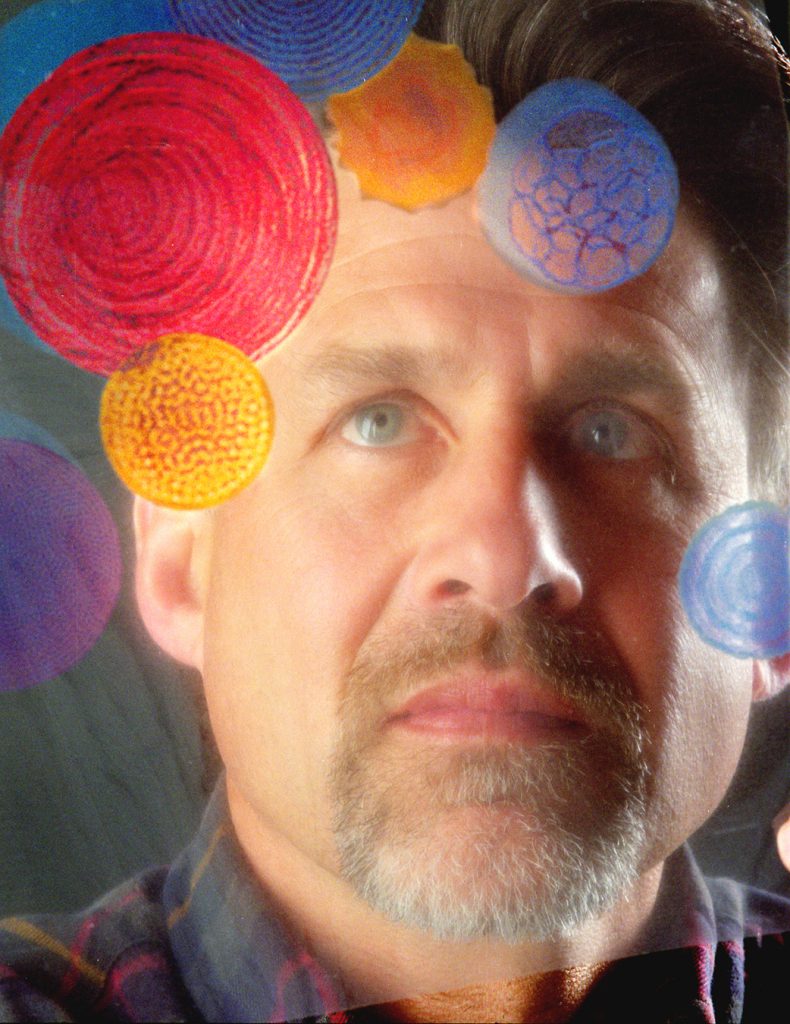
(Photo by Randy Montoya)
Download 300dpi JPEG image, ‘Brinker2.jpg’, 2.1Mb (Media are welcome to download/publish this image with related news stories.)
ALBUQUERQUE, N.M. — Though courted by the finest universities in the United States, a noted Sandia National Laboratories materials scientist has decided to remain at the Labs and accept a second position as tenured professor in the University of New Mexico’s (UNM) Department of Chemical and Nuclear Engineering.
Sandia researcher Jeff Brinker is expected not only to teach UNM courses, as have other Sandia scientists, but also to create an extended materials science program focusing on nanomaterials. Sandia is a laboratory of the U.S. Department of Energy.
In addition to providing intellectual leadership, “Jeff may bring substantial funding to the University from organizations like the National Science Foundation [NSF],” says Paul Fleury, dean of UNM’s School of Engineering.
“We all feel he is the person to lead this effort,” says Chemical and Nuclear Engineering chair Joe Cecchi. “Jeff is internationally renowned and has pioneered techniques in self-assembly of nanocomposites that have gained the attention of the entire world of researchers in materials science.”
The UNM materials work should complement efforts at New Mexico Tech and New Mexico State University without competing with them, says Cecchi. “Other universities are likely to participate in this program.”
Brinker’s work in self-assembly — the spontaneous organization of materials into complex three-dimensional nanoscale architectures — is routinely published in the most outstanding scientific journals.
“My intent is to initiate a materials program at UNM,” says Brinker. “We’ll be interested in building lifelike qualities into materials — materials that sense their environment and respond, that are self-healing, that run away from danger.”
UNM, with two national laboratories nearby, has potential that hasn’t been fully realized, he says. “One of my impetuses for doing this is to make UNM a place in materials science that will attract topnotch students and graduate students in the field.”
Brinker says he would like to create a materials program that focuses on nanomaterials that interface between biology and electronics. “We will have the national labs participate; that’s the only way forward.”
Scientists at the nearby national labs are excited, Brinker says, because “they can serve as advisors for students and gain greater job satisfaction.” Meanwhile, students will work on basic science that will appear in scientific journals and underpin later technological advances.
Says Kay Hays, Sandia director of materials and process sciences, “People of Jeff’s stature could possibly bring UNM permanent NSF funding for its Center for Microengineered Materials.”
Sandia is interested in the project for several reasons, she says. “We’d like to give our researchers the best of both worlds — working at a national laboratory and at a university,” she says. “It makes us more attractive as an employer.” To this end, she says, “This is our toe in the water, our launching.” It also, she says, “makes it more likely we’ll retain the best and brightest.”
“We’ve had people acting at the university in adjunct roles and even teaching there as part of a UNM/Sandia Distinguished Professor Program, but we’ve never had this type of appointment,” says Tom Picraux, Director of Sandia’s center for physical and chemical sciences. “Materials science is an area in which Sandia has a considerable competency, and we are delighted that the University wants to build a strong degree option in this area.”